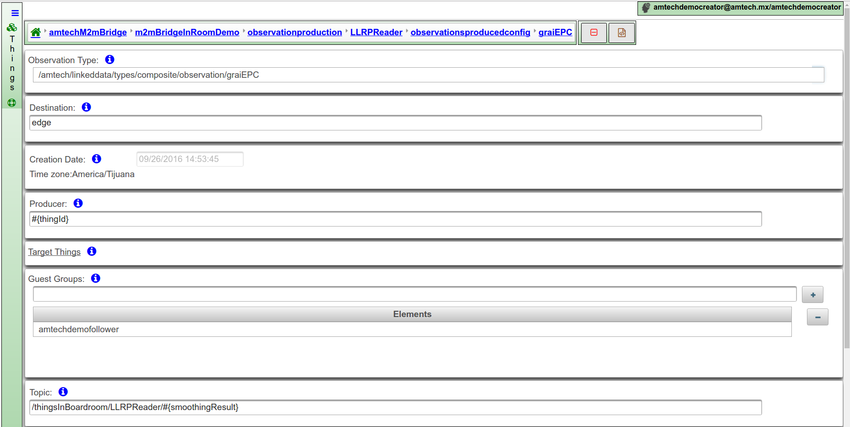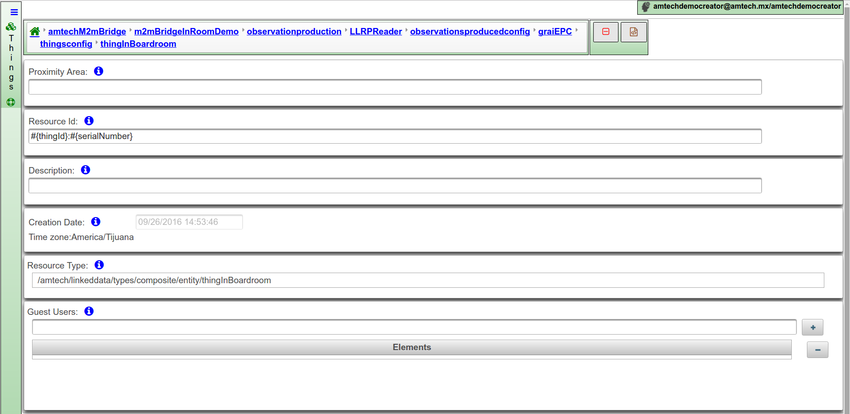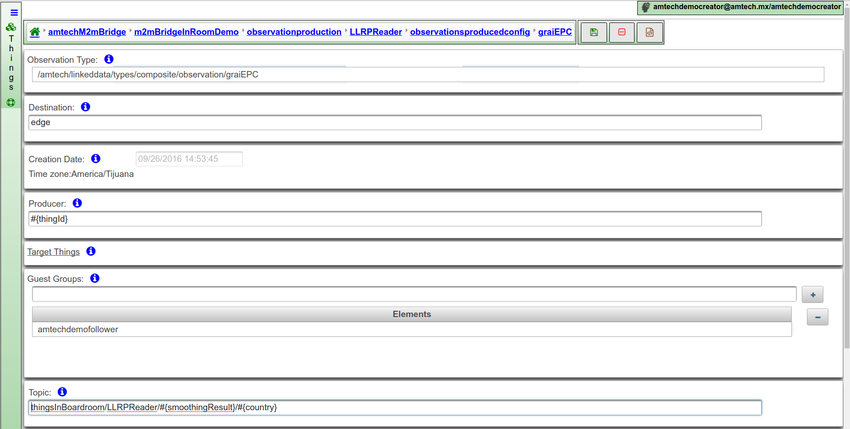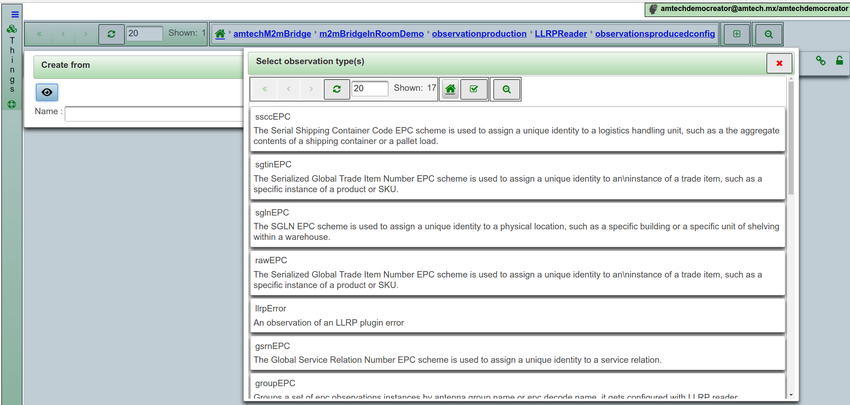Observation production config
From AMTech WikiDocs
Configuration options
The goal of this configuration is to identify the observation types that a thing of a given type produces behind a bridge.
- When you access this configuration, you're presented with a list of thing types (initially empty).
- You can add new thing types as a way of expressing a production for all the bridge thing instances belonging to that type. Therefore only those types associated to the things that are already configured as bridge instances are shown (things in the bridgeInstances property).
- Once the type is added to the observation production configuration you can navigate to the produced observations and add new observation types. This allows you to express that those bridge instances that belong to the selected type can produce the observation that you're about to add/modify.
- So you select an observation type. It has got to be an observation type listed in the observation types that this thing type can produce. See the definition of the corresponding thing type, observationproductionconfig property
- Once selected you should configure the following properties:
Remarks: The Amtech M2M bridge uses this configuration to automatically fill this fields in the observations it sends. The follower must have a role with access polices to the thing type in order to get this information
Example
Let's show some more configuration details through an example:
- As we can appreciate from the previous explanation, the configuration involves thing types and the observation types they produce. The following example shows a LLRPReader that is configured to produce observations of type graiEPC:
- Configure observation properties required to produce selected observations and enforce security including topic, targetthings, producer, guestusers, and guesttenants. (See Observations and observation types). The following example illustrates an graiEPC observation type with:
- topic - thingsInBoardroom/LLRPReader/#{smoothingResult}, placeholder #{smoothingResult} is used to group observations in child branches new or lost
- producer - reunionMexicoEDN:llrpantenna#{antennaId}, placeholder #{antennaId} is used to group identify what antenna id produced the observation
- targetthings - resource id reunionMexicoEDN:llrpantenna#{antennaId}:#{serialNumber}, placeholders #{antennaId} and #{serialNumber} are used to antenna id and product serial number from graiEPC values to uniquely identify the target thing.
- Placeholders
- Allows to set identifiers that will be substituted by real values at different intelligence layers, the following example illustrates.
- guesttenants #{companyPrefix} - placeholder is used to set a guesttenants from graiEPC value companyPrefix allowing to control the access to observations and things from the intelligence in the edge.
- topic thingsInBoardroom/LLRPReader/#{smoothingResult}/#{country} - placeholder is used to group observations in child branches by countries.
- Relation with thing types observation production configuration (See Thing types)
- Each thing type defines which observation types produces as part of the type semantic. The following example illustrates selecting observation type graiEPC produced by LLRPReader type.




